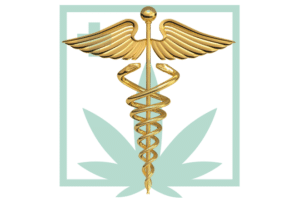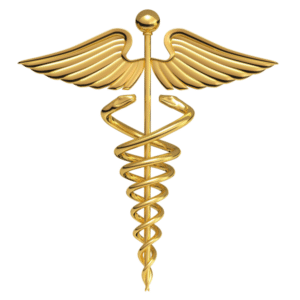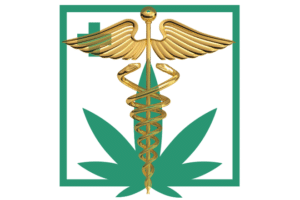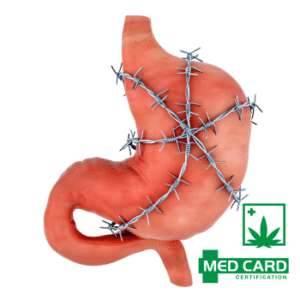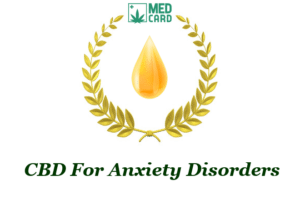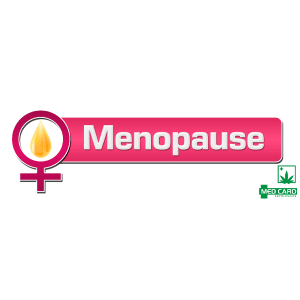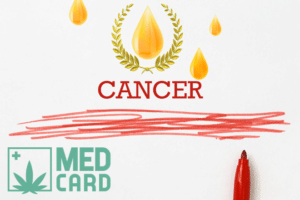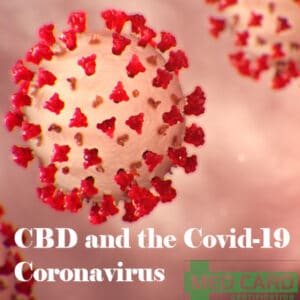
Treating Cachexia or Wasting Syndrome with Marijuana
Does medical marijuana help cachexia patients? Cachexia, also known as wasting syndrome, occurs in the late stages of many chronic illnesses. It’s characterized by substantial weight loss which in turn weakens the body and immune system. Many patients suffering from conditions such as AIDS and cancer are using medical marijuana for cachexia to stave off or slow its progression. And the evidence of marijuana’s efficacy in treating cachexia is mounting.
While for some, “the munchies” is an unwelcome side effect of marijuana, for others it can be a lifesaver. Patients suffering from conditions such as cancer, AIDS, tuberculosis, and other serious ailments are using medical marijuana to treat a condition known as cachexia and keep body wasting at bay.
Wasting often occurs in the late stages of chronic illness. It can lead to a variety of metabolic disorders. The most dangerous aspects of cachexia (pronounced: kakexia) are malnutrition and immune deficiency. Cachexia patients also have a reduced tolerance to anti-cancer treatments such as chemotherapy and radiation.
Progestogens, the only drug approved by FDA for cancer-related cachexia, is not completely effective. It also comes with sometimes side effects. Marijuana, on the other hand, has been proven to be well-tolerated and safe when used properly and not abused.
Sometimes called cancer cachexia, or CCA, the condition affects somewhere between 50% and 80% of all cancer patients. Moreover, 25% of cancer deaths have been attributed to complications due to cachexia.
Unfortunately, cachexia is not always given the attention it deserves by oncologists (cancer specialists). Once wasting sets in, it cannot be fully reversed by nutritional supplements alone. Malnutrition can reduce the effectiveness of drugs and increase chemotherapy toxicity and thus reduce its effectiveness.
If cannabis can help to keep wasting at bay, it can greatly improve the chances of the patient having a positive outcome from chemo.
What kinds of medical cannabis/marijuana products are used to treat cachexia?
Let’s take a moment to discuss exactly what we mean by the terms marijuana and cannabis. Those who are not familiar with the medicinal use of cannabis might think of buds and joints and bongs. However, medical marijuana has come a long way in the past few decades. Today patients have a multitude of options. There are a wide variety of delivery methods as well as a myriad of formulas.
Marijuana is actually just one product produced from the cannabis plant. There are several derivatives of marijuana to choose from today. Moreover, there are also strains of cannabis that are essentially devoid of the intoxicating cannabinoid delta-9-THC and therefore do not produce intoxicating effects. These cultivars are generally referred to as hemp.
Rather than being high in THC, medical-grade hemp is high in CBD. Collectively, medical-grade marijuana and hemp and all derivatives thereof can be referred to as medical cannabis.
We also today have a wider choice of cannabinoids. In addition to THC and CBD, cannabinoids such as hemp-derived CBG and delta-8-THC can also be purchased online.
Other than not containing THC, there’s really no other difference between medical hemp and medical marijuana. Both can be put through a series of extraction, filtration, and distillation processes to produce a wide array of medicinal products.
Common Medical Cannabis Products
Here are some of the more common medical cannabis products available:
- Hemp flower (identical to marijuana without the THC)
- Cannabis extracts are used to make tinctures, capsules, edibles, and vape oils with varying levels of THC, CBD, and other cannabinoids as well as strain-specific terpenes
- Cannabis concentrates such as Rick Simpson oil, wax, shatter, etc., also with varying levels of cannabinoids and terpenes are popular.
- Live resin, hashish, kief, and other whole-plant products can be smoked, vaporized, or added to food (edibles)
- Cannabinoid-infused tinctures, capsules, and vape oils, pills, and powders made with cannabinoid isolates — that is purified THC, CBD, etc., (as opposed to broad-spectrum cannabis extracts)
- Cannabinoid atomizers (inhalers)
- Cannabinoid patches
- Cannabinoid-infused topicals (ointments, creams, balms, etc.)
How does medical marijuana help cachexia patients?
Compounds produced in the resinous flower clusters of the female cannabis plant such as delta-9-THC and CBD make up a class of organic chemicals known as cannabinoids. Numerous studies have shown that cannabinoids have the potential to improve appetite, increase body weight, improve mood, and increase the quality of life in some cancer and AIDS patients.
Numerous bodily functions are mediated by chemicals produced in the brain. These chemicals enter the bloodstream and interact with receptors on the surface of cells throughout the body including the nervous system and immune system. It’s these chemicals that relay instructions to individual cells.
One of these chemical relay systems, the one upon which cannabinoids have an effect, is appropriately known as the human endocannabinoid system, or ECS.
The term endocannabinoid simply means cannabinoids that are produced by our own bodies. Interestingly, cannabinoids produced in cannabis, known as phytocannabinoids, produce very similar effects to our own natural cannabinoids. This is the main reason cannabinoids are medicinally useful.
The ECS is responsible for a wide variety of bodily functions including appetite and digestion. The ECS is also involved in pain response, inflammation reduction, sleep cycles, mood, and so forth.
Everyone’s ECS is different in terms of the expression of cannabinoid receptors and the production of endocannabinoids. Because of this, each patient responds differently to treatment with cannabinoids. Moreover, certain cannabinoids are more effective at treating particular symptoms than others depending on the patient’s condition.
The medicinal benefits of various phytocannabinoids such as THC, CBD, CBG, CBN, and so forth, tend to overlap. While THC might have a better effect in some patients, CBD or CBG might have a better effect in other patients. Because of this, some experimentation is needed to determine the ideal cannabis strain or cannabinoid formula for each patient.
Is there any scientific evidence that medical cannabis can treat cachexia?
In recent years, researchers are finding many potential medical applications of cannabinoids. In particular, studies show that cannabinoids can relieve nausea and vomiting and increase appetite in patients suffering from a wide array of illnesses.
in one study, fifty-five patients found to have severe nausea from antitumor drugs took part in a double-blind, randomized crossover study. In the study, THC, prochlorperazine, and a placebo were compared for effectiveness.
Nausea was found to be absent in 40 of 55 patients receiving THC while only eight of 55 patients receiving prochlorperazine benefited as did five in the placebo group.
In 1985, after a synthetic form of THC called Dronabinol was shown to stimulate appetite in multiple clinical trials, the drug was approved by the FDA for the treatment of chemotherapy-induced nausea and vomiting. And in beginning in 1992, Dronabinol was given to patients with HIV-induced wasting syndrome.
The administration of just 5 mg of Dronabinol twice each day before meals was shown to increase appetite, improve energy intake, increase body fat, and also improve patients’ mood.
In another study, Dronabinol was administered to 88 AIDS patients for 6 weeks. Researchers found that it helped to stabilize weight or even produce modest weight gain.
These results were again confirmed by a follow-up study involving 94 AIDS patients. Dronabinol was administered daily for 12 months. This study also showed that Dronabinol improved body weight.
Dronabinol is also being used successfully to reduce wasting in patients suffering from Alzheimer’s disease.
Of course, the best way to stave off cachexia in cancer patients is to control cancer itself. In addition to their usefulness in treating the symptoms of cancer and AIDS, cannabinoids also exhibit antitumor effects on a wide range of animal models of cancer. Studies have shown that cannabinoids have the potential to trigger apoptosis (cell death) in cancer cells. In some studies, cannabinoids also reduce metastasis or the spread of cancer.
This being said, much more research needs to be done to determine if medical marijuana can help to prevent, cure, or slow the progression of cancer.
How is medical marijuana used to treat cachexia?
In the treatment of cachexia, cannabis is used systemically. That is, via the bloodstream. Delivery methods that produce systemic effects include inhalation (smoking, vaping, inhalers), absorption (patches), or ingestion (edibles). All of these delivery methods have been shown to help relieve symptoms and side effects such as nausea, lack of appetite, and wasting.
Determining which cannabis products and formulas are ideal for treating cachexia depends entirely on the patient’s needs and lifestyle. While some patients might find relief from high-THC, low-CBD products, others might get better results from using a high-CBD, low-THC product. Patients might also want to try CBG- or D8-THC infused products.
In terms of dosage, patients beginning medical marijuana treatment should start with very low doses of five to ten milligrams depending on body size. If no adverse effects are realized then the patient can slowly increase the dosage until the desired effects are achieved. Commonly, cannabinoid dosages fall in the 10- to 50-milligram range either once daily or several times throughout the day.
Patients should discuss their options with a qualified healthcare provider who is an expert in the use of cannabis in treating their particular ailment. Dispensary employees (budtenders) can also help patients work through their options and choose a treatment protocol.
Cannabis and its derivatives — including marijuana — are proving to offer a natural, safe, and effective herbal supplement to patients with illnesses that put them at risk of cachexia. Medical marijuana and cannabis derivatives can improve the quality of life and possibly even extend the life of many of these patients.
VIDEO Cachexia, also known as Wasting Syndrome, and Medical Marijuana - The Effectiveness of Cannabis

Sign Up for Medical Cannabis Today!
For potential patients, if you’re ready, we make it easy to connect with a medical marijuana doctor nearby or online. If you are interested in getting certified, please fill out the MMJ patient registration form below and press submit to get started. See if you qualify today!

MedCard Registration Form







